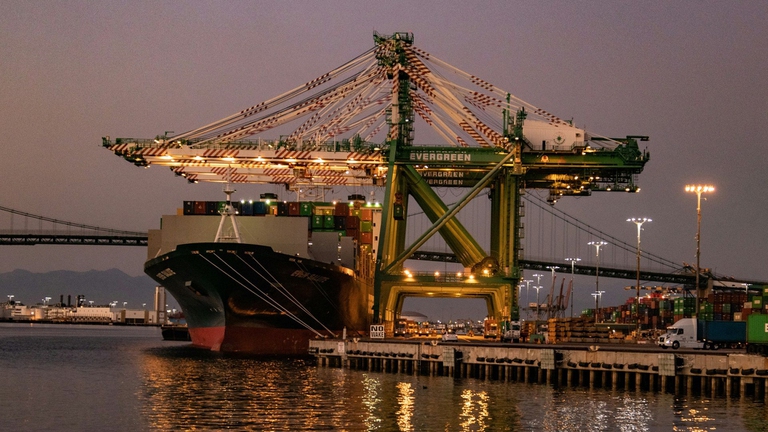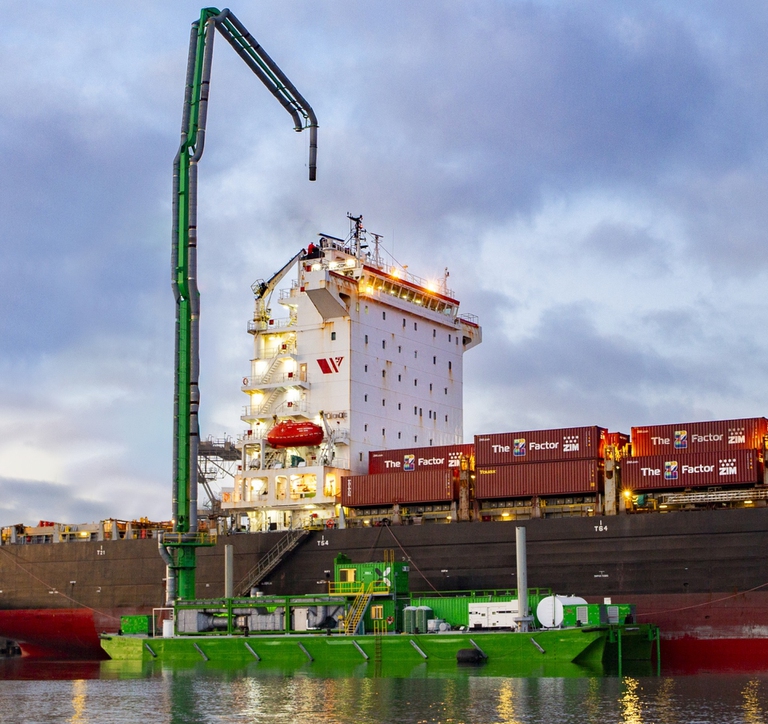https://www.lifegate.it/tecnologia-cattura-co2-navi
- |
Capture carbon dioxide “at the source” to combat pollution caused by transport maritime.The experimentation started in recent months in the ports of Los Angeles, Long Beach and Oakland and carried out by the Californian startup has aroused much interest Stax engineering, a test that many have already defined as a "breath of fresh air in the fight against maritime pollution".We are talking about a barge a few tens of meters long equipped with a 90 meter flexible arm that captures and filters exhaust gases of container ships docked in port.
A solution that works almost as well a huge kitchen extractor hood where the harmful emissions generated by the engines are sucked into the filtering system of the barge through a network of pipes, filters and pumps, a solution that could represent an effective solution to reduce the environmental impact of maritime transport.
The barge removes 99 percent of particulate matter emitted by ships
The system is powered by diesel fuel with low sulfur compound content and is designed to capture and filter exhaust gases not only of large ships but also of cars, removing 99 percent of particulate matter and 95 percent of nitrogen oxide.The filtering process ends with the release of a mixture into the air that includes low levels of CO2 and water vapor.

Once fully operational, the system could represent a significant step forward in fight against maritime pollution.At least as long as the enormous container ships (even 400 meters long) remain docked in the port.Which is where then pollution produces the greatest damage, affecting large American port cities, such as Los Angeles, Long Beach and Oakland, where approximately half of the container imports of the entire United States pass.
California rules to reduce shipping emissions
According to l'Environmental and Energy Study Institute, the ports of Los Angeles and Long Beach alone (practically a single entity, given that they are separated by a handful of kilometers) produce approximately 100 tons of pollutants per day, a quantity greater than the emissions of 6 million cars.An enormity, which pushed the California air resources board to issue rules requiring certain ocean-going ships to reduce their emissions by at least 80 percent while at berth.
The currently most viable solution remains that of connect ships to electricity to the ground via a special cable (cold ironing), which would allow diesel engines to be turned off during port stops, thus improving air quality with a strong reduction in local emissions.Deploying the technology and setting up the infrastructure to electrify port docks “is a challenge that will take time,” said Mario Cordero, CEO of the Port of Long Beach Management Company.The ships, as well as the terminals, they must in fact be adapted to allow electrical connection to earth, with huge investments.There are numerous solutions under consideration to reduce the impact of maritime transport.
According to the CEO Mike Walker, the alternative already available to cold ironing it could be the aforementioned Stax system adaptable to all those ships that are not yet set up for "plug" connection with shore power sockets;it is estimated that currently only about 15 percent of container ships mooring in the United States could adopt this solution.
In the ports of Los Angeles and Long Beach alone, where the Stax system is being tested, the CO2 capture barge could reduce emissions by up to 140-150 ships a year when fully operational. A small thing compared to the almost four thousand merchant and passenger units that dock in these terminals every year.
The alternative?Capture carbon dioxide from ships on the high seas
If in California the barge that captures CO2 is giving good results, work is also being done in this direction in Italy.There Ecospray, an Italian company specializing in integrated solutions for sustainable reconversion of the maritime and land industries has developed a filtering system that acts on the capture and storage of CO2 from ships, in this case not during docking at the dock but during navigation.
In this case the research focuses on two technologies that act on the chemical absorption of carbon dioxide coming out of ship chimneys through the use of amines or calcium hydroxide.In both cases these are solutions that allow you to capture up to 80 percent of CO2 emitted during navigation, as evidenced by a test carried out in 2023 on a commercial ship after two years of experimentation.

The choice between which of the two technologies of CO2 capture developed by Ecospray is more effective and also depends on the type of ship and the characteristics of the itinerary that he must do.The impact of maritime transport is a relevant source in the context of global mobility:based on data provided by the European Union on the emissions of ships that have served in the community space, a naval unit of 6 thousand gross tons emits almost 7 million tons of CO2 in a year.
Considering the data provided by Brussels, according to which approximately 10,800 ships exceeding 6 thousand tons are circulating in the world, according to Ecospray it would already be It is possible to capture up to 2 thousand tons of CO2 per single trip.
The ocean is the largest carbon sink on the planet
The oceans they absorb around 25-30 percent of global CO2 emissions.If on the one hand this phenomenon purifies the air and limits global warming, on the other it leads to an increase in water acidification.Among the possible solutions to deal with the problem also a pilot project to capture carbon dioxide from seawater.In practice it is a system capable of providing solutions for the liquefaction of CO2 in collaboration with Capture, an American company founded within the California Institute of Technology (Caltech).In turn, Captura is collaborating to build a pilot CO2 capture system of one thousand tonnes per year at the Equinor factory in Kårstø, on the west coast of Norway.
The delivery of liquefaction system by Ecospray for the pilot plant is scheduled for the third quarter of 2024.How it works:once the CO2 has been captured, the sea water is removed, liquefied and purified using Ecospray technology.The same will then be used for the commissioning of the Northern Lights systems, the world's first open source infrastructure that offers i CO2 transport and storage services.
